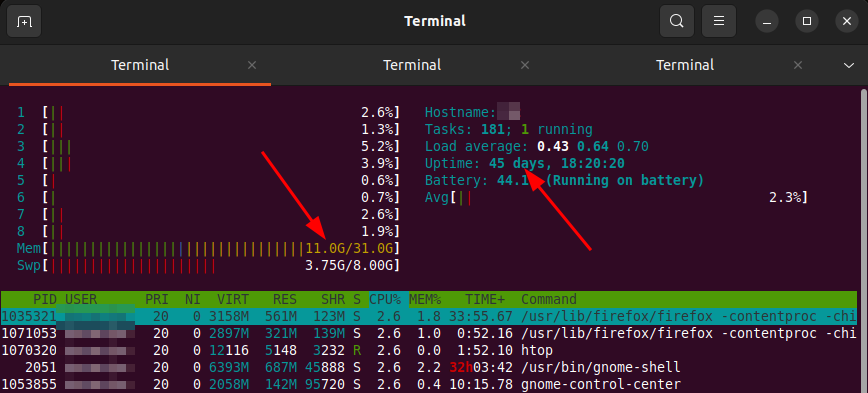
So here’s a fix that left me with some question marks:
A family member likes to test the limits, and pushes out rebooting the notebook running on Linux for as long as possible, sometimes well over 6 weeks. A side-effect of this is that applications that like to bloat, such as Firefox, Chromium, Thunderbird, Libreoffice, etc. etc., keep eating up more and more RAM. At some point, usually after a week or so, all of the 16 GB RAM + 8 GB swap space on the SSD becomes used.
Closing the apps occasionally would help, but that’s also not in the cards. EarlyOOM helps to keep the system stable, but at some point the system just keeps banging its head against the 16 GB of RAM. So what to do? At some point I was convinced to install 32 GB of RAM. I reluctantly agreed, but honestly, I thought it wouldn’t help much. From my point of view, doubling RAM would just extend the time to the inevitable, and EarlyOOM would be asked to help again. But it looks like I was wrong.
To my surprise, the notebook has been running without a reboot for more than one and a half months, but RAM usage seems to be stable somewhere around 11 to 12 GB. Also, the swap partition remains utilized at just around 50% of its capacity, while before, it was filled up pretty quickly. Good, fine for me, a cool fix for just 50 euros, but I would not have expected this. Perhaps memory fragmentation is not as severe, as enough RAM is there to cache file access? Any better ideas, anyone?